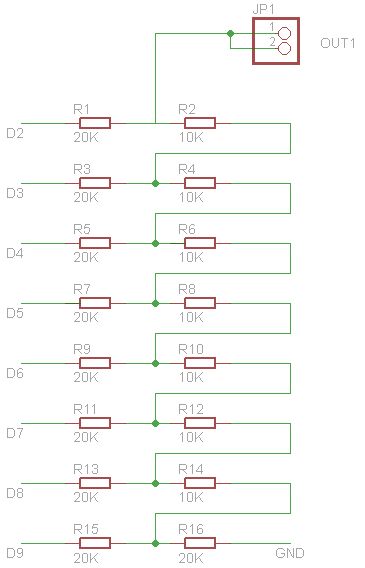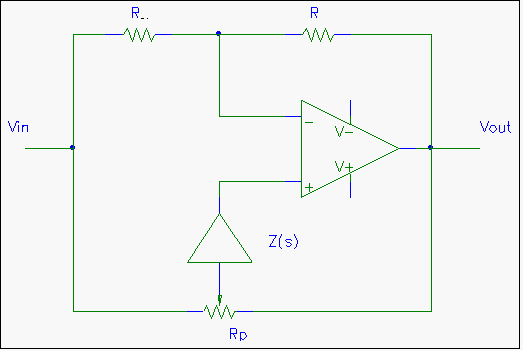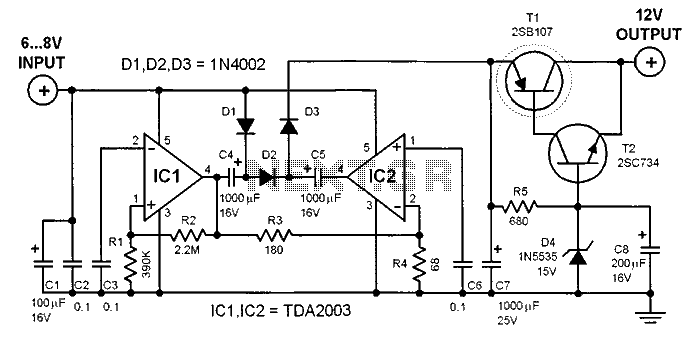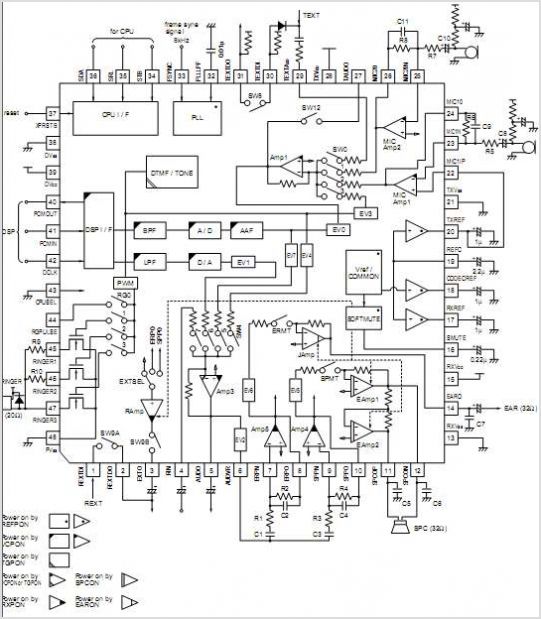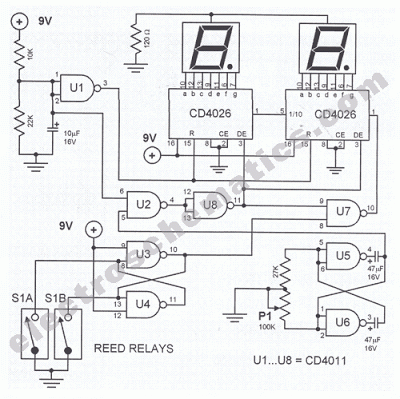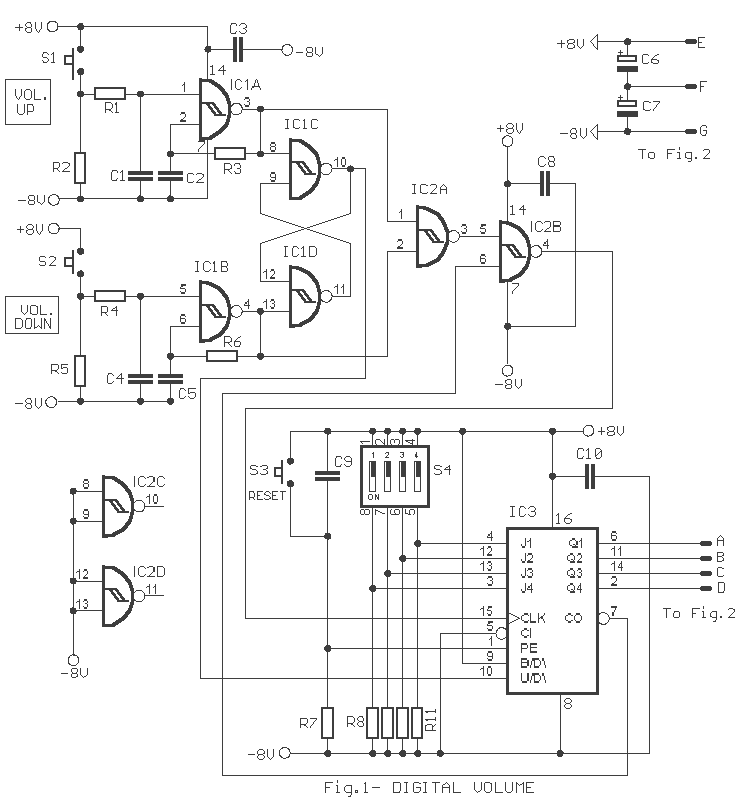
Analog To Digital Converter
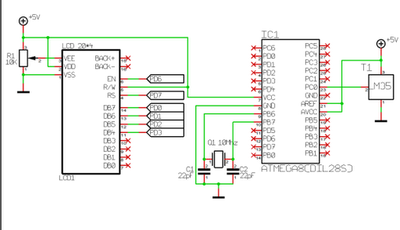
An Analog-to-Digital Converter (ADC) is a circuit integrated into a single chip designed to convert analog signals into digital signals. Typically, an 8-bit ADC chip converts an analog signal ranging from 0 to 5 volts into a digital level ranging from 0 to 255. Recently, there has been an increased availability of ADCs capable of processing data at 12 bits. There are two primary methods for performing this conversion. The first method is the Flash ADC, also known as a parallel ADC, which is recognized for its straightforward circuit design. This method employs a group of comparators that compare the input signal to a reference voltage using operational amplifiers. Resistors used in this configuration must have high tolerance to ensure accuracy. The second method is Successive Approximation, which incrementally searches for the most precise value. This method utilizes a register that tests all bit values starting from the Most Significant Bit (MSB) down to the Least Significant Bit (LSB). Throughout this calculation process, the register monitors the output of the comparator to determine if the binary calculation is less than or greater than the input signal.
An Analog-to-Digital Converter (ADC) is a critical component in modern electronic systems, enabling the conversion of real-world analog signals into a format that can be processed by digital systems. The operation of an ADC involves sampling the analog input signal and quantizing it into discrete digital values.
For an 8-bit ADC, the output resolution is 256 discrete levels, allowing for a relatively coarse representation of the input signal. This is suitable for applications where high precision is not critical. In contrast, 12-bit ADCs offer 4096 levels of resolution, providing a finer granularity that is beneficial for applications requiring greater accuracy, such as audio processing, instrumentation, and control systems.
The Flash ADC method is characterized by its speed, as it can convert an analog signal to a digital signal in a single step. This is achieved through the use of multiple comparators, each of which compares the input signal against a specific reference voltage. The output from these comparators is then used to generate a digital output that represents the input signal. Flash ADCs are typically used in applications where speed is essential, such as in high-frequency signal processing.
On the other hand, the Successive Approximation method is more complex and slower than Flash ADCs but is favored for its simplicity in design and reduced component count. This method utilizes a binary search algorithm to zero in on the input signal's value. By starting with the MSB and working down to the LSB, the circuit can effectively narrow down the range of possible values until the most accurate representation of the input signal is found. The comparator's output guides this process, indicating whether the current approximation is too high or too low, allowing the system to adjust accordingly.
In conclusion, the choice of ADC architecture—whether Flash or Successive Approximation—depends on the specific requirements of the application, including speed, resolution, and complexity. Understanding these methods is essential for designing effective digital systems that interface with the analog world.ADC is a circuit formed in a single functioning chip to change analog signal becomes digital signal. In general we apply chip ADC 8 beet to change analog signal stretch 0-5 V becomes digital level 0-255 for ADC 8 beet. At the moment have also been in big supply ADC capable to work for data process 12 bits. To do converting there are two methods. F irst method is use a Flash ADC. This method also is recognized as parallel ADC as easiest circuit to be studied. This method formed by using a group of comparator comparing input signal to reference strain applies op-amp. Resistor applied Resistor must having high tolerance that more accurate. Second method is method Successive Approximation. This method applies approach successively to look for value that is most precise. This register calculates by trying to all bit values started from MSB and terminated with LSB. During calculation process, register will monitor comparator output to see if calculation of binary is less or bigger than input signal.
🔗 External reference
An Analog-to-Digital Converter (ADC) is a critical component in modern electronic systems, enabling the conversion of real-world analog signals into a format that can be processed by digital systems. The operation of an ADC involves sampling the analog input signal and quantizing it into discrete digital values.
For an 8-bit ADC, the output resolution is 256 discrete levels, allowing for a relatively coarse representation of the input signal. This is suitable for applications where high precision is not critical. In contrast, 12-bit ADCs offer 4096 levels of resolution, providing a finer granularity that is beneficial for applications requiring greater accuracy, such as audio processing, instrumentation, and control systems.
The Flash ADC method is characterized by its speed, as it can convert an analog signal to a digital signal in a single step. This is achieved through the use of multiple comparators, each of which compares the input signal against a specific reference voltage. The output from these comparators is then used to generate a digital output that represents the input signal. Flash ADCs are typically used in applications where speed is essential, such as in high-frequency signal processing.
On the other hand, the Successive Approximation method is more complex and slower than Flash ADCs but is favored for its simplicity in design and reduced component count. This method utilizes a binary search algorithm to zero in on the input signal's value. By starting with the MSB and working down to the LSB, the circuit can effectively narrow down the range of possible values until the most accurate representation of the input signal is found. The comparator's output guides this process, indicating whether the current approximation is too high or too low, allowing the system to adjust accordingly.
In conclusion, the choice of ADC architecture—whether Flash or Successive Approximation—depends on the specific requirements of the application, including speed, resolution, and complexity. Understanding these methods is essential for designing effective digital systems that interface with the analog world.ADC is a circuit formed in a single functioning chip to change analog signal becomes digital signal. In general we apply chip ADC 8 beet to change analog signal stretch 0-5 V becomes digital level 0-255 for ADC 8 beet. At the moment have also been in big supply ADC capable to work for data process 12 bits. To do converting there are two methods. F irst method is use a Flash ADC. This method also is recognized as parallel ADC as easiest circuit to be studied. This method formed by using a group of comparator comparing input signal to reference strain applies op-amp. Resistor applied Resistor must having high tolerance that more accurate. Second method is method Successive Approximation. This method applies approach successively to look for value that is most precise. This register calculates by trying to all bit values started from MSB and terminated with LSB. During calculation process, register will monitor comparator output to see if calculation of binary is less or bigger than input signal.
🔗 External reference
